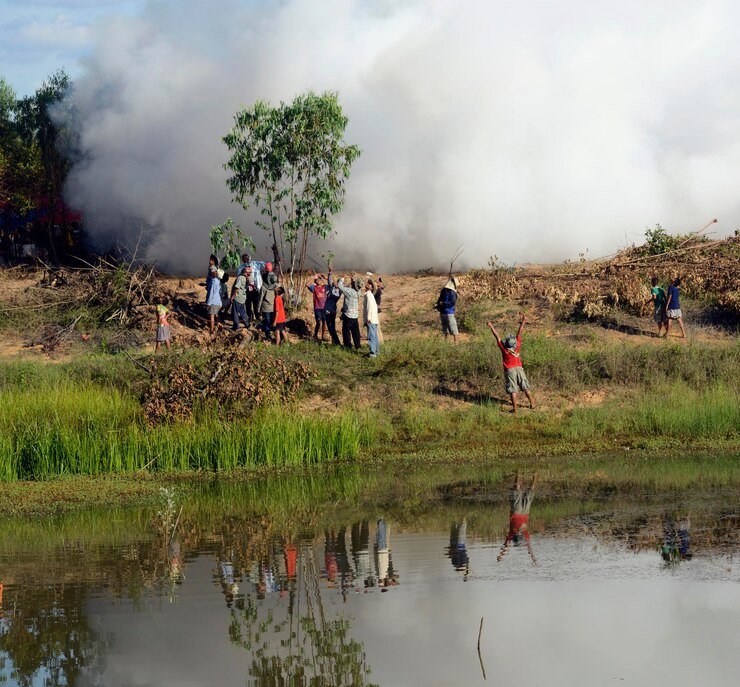
Climate Solutions for Underserved Communities
Climate change is a global crisis that affects all regions, but its impacts are felt disproportionately in rural and underserved communities. These areas often lack the infrastructure, resources, and policy attention needed to implement effective climate adaptation strategies. While urban centers receive significant investment in climate resilience projects, rural populations are frequently overlooked. However, ensuring climate adaptation in rural areas is crucial for food security, economic stability, and overall environmental sustainability.
The Importance of Climate Adaptation in Rural Areas
- Agricultural Resilience: Many rural communities depend on agriculture for their livelihoods. Climate change threatens this sector through erratic rainfall, droughts, and soil degradation. Without adaptation strategies such as drought-resistant crops, improved irrigation systems, and agroforestry, these communities face severe economic and food security risks.
- Vulnerability to Extreme Weather Events: Rural areas are often more exposed to climate hazards such as floods, hurricanes, and heatwaves. Limited access to emergency response services and infrastructure exacerbates the consequences of these disasters, leading to displacement and loss of life.
- Water Security: Climate change affects water availability and quality. Rural communities, which rely on natural water sources such as rivers, lakes, and boreholes, are at risk of water shortages. Implementing rainwater harvesting, water conservation techniques, and sustainable watershed management can enhance water security.
- Health Implications: Rising temperatures and changing weather patterns increase the spread of vector-borne diseases like malaria and dengue fever. Additionally, extreme heat events exacerbate respiratory and cardiovascular conditions. Strengthening rural healthcare systems and promoting awareness about climate-related health risks are vital for community resilience.
Climate Solutions for Underserved Communities
- Decentralized Renewable Energy: Expanding access to solar and wind energy in rural areas can reduce reliance on fossil fuels and improve energy resilience. Off-grid solar systems and microgrids provide sustainable power for households, schools, and healthcare facilities.
- Sustainable Farming Practices: Encouraging climate-smart agriculture, such as conservation tillage, crop rotation, and organic farming, can help maintain soil fertility and reduce carbon emissions. Additionally, training farmers in adaptive techniques ensures long-term productivity.
- Community-Led Adaptation Projects: Local communities should be empowered to lead adaptation efforts. Establishing cooperatives, self-help groups, and community resource centers can enhance knowledge sharing and collective action.
- Infrastructure Development: Investment in climate-resilient infrastructure, such as elevated roads, flood-resistant homes, and efficient drainage systems, is crucial. Governments and NGOs should prioritize infrastructure development tailored to the unique needs of rural populations.
- Early Warning Systems and Disaster Preparedness: Implementing early warning systems for floods, droughts, and extreme weather events can help rural communities prepare for climate disasters. Training local emergency response teams and improving communication networks are essential steps.
- Policy Inclusion and Funding Access: Governments and international organizations must ensure that rural areas receive adequate funding and policy attention. Establishing dedicated climate funds and incentivizing private sector investments in rural resilience projects can bridge the adaptation gap.
Medela NG’s Role in Climate Adaptation
Medela NG recognizes the critical need to include rural areas in climate adaptation strategies. Through its climate change program, Medela NG works to bridge the gap in underserved communities by:
-
Promoting Climate-Smart Agriculture: Medela NG trains farmers on sustainable farming techniques that improve soil fertility and increase crop resilience to climate shocks.
-
Enhancing Public Health Preparedness: The organization runs awareness campaigns on climate-induced health risks and supports rural healthcare facilities in mitigating the impact of extreme weather on vulnerable populations.
-
Providing Renewable Energy Solutions: Medela NG facilitates access to solar-powered solutions for rural healthcare centers and schools, reducing reliance on unsustainable energy sources.
-
Advocating for Policy Change: Medela NG engages policymakers and stakeholders to ensure rural communities receive the necessary funding and infrastructural support for climate adaptation.
Conclusion
Climate adaptation must be inclusive, ensuring that rural and underserved communities receive the attention and resources needed to build resilience. Neglecting these areas not only endangers livelihoods but also threatens national and global sustainability efforts. By implementing localized and community-driven climate solutions, we can create a more equitable and resilient future for all. Medela NG remains committed to championing climate resilience in rural Nigeria, ensuring that no community is left behind in the fight against climate change.
Sources
-
Intergovernmental Panel on Climate Change (IPCC). (2021). Climate Change 2021: The Physical Science Basis. Cambridge University Press.
-
United Nations Development Programme (UNDP). (2023). Building Climate Resilience in Rural Communities. Retrieved from https://www.undp.org
-
World Health Organization (WHO). (2022). Climate Change and Health Risks in Vulnerable Populations. Retrieved from https://www.who.int
-
Food and Agriculture Organization (FAO). (2023). Climate-Smart Agriculture for Sustainable Development. Retrieved from https://www.fao.org
-
Nigerian Meteorological Agency (NiMet). (2023). Annual Climate Report on Nigeria’s Weather Patterns. Retrieved from https://www.nimet.gov.ng

Share This News